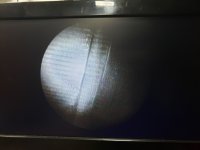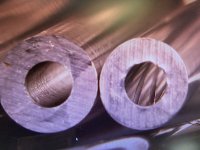"Is the reduction or elimination of reamer marks in the barrel the only purpose of lapping?"
Primarily - Lapped barrels generally foul MUCH less than non-lapped barrels due to the smoother bore surface, and less bullet deformation/damage in the barrel also provides improved precision. Lapping can also be used to eliminate bore diameter imperfections, or to lap in a choke/taper as described previously.
"If lapping is a criteria of a "match barrel" it would seem to exclude barrels on rifles made by Anschutz, probably Walther and FWB also."
Yes - "factory" chrome-moly barrels are generally not considered "match" grade barrels.
Primarily - Lapped barrels generally foul MUCH less than non-lapped barrels due to the smoother bore surface, and less bullet deformation/damage in the barrel also provides improved precision. Lapping can also be used to eliminate bore diameter imperfections, or to lap in a choke/taper as described previously.
"If lapping is a criteria of a "match barrel" it would seem to exclude barrels on rifles made by Anschutz, probably Walther and FWB also."
Yes - "factory" chrome-moly barrels are generally not considered "match" grade barrels.



